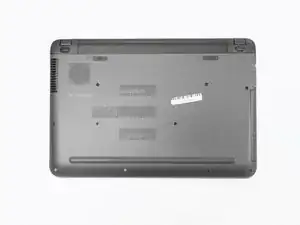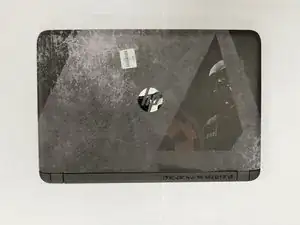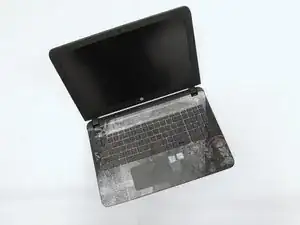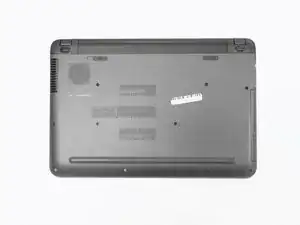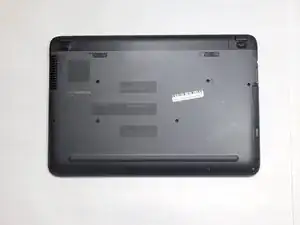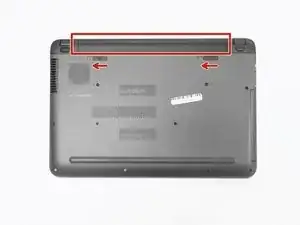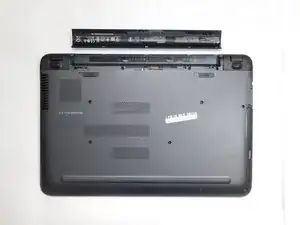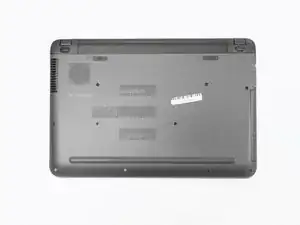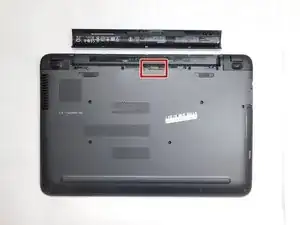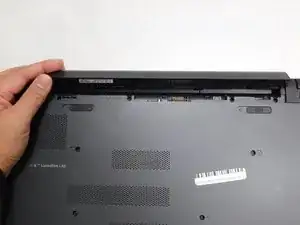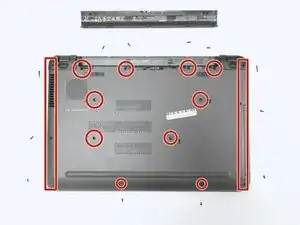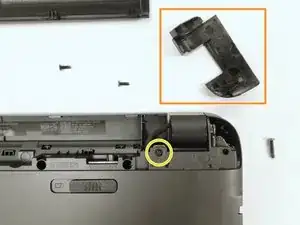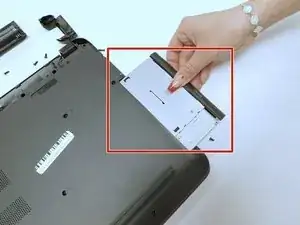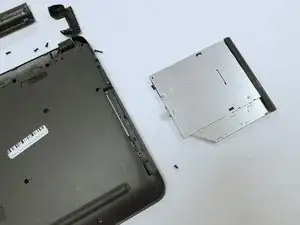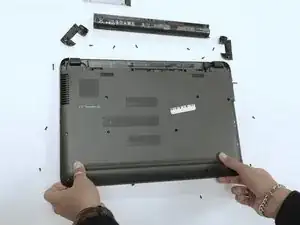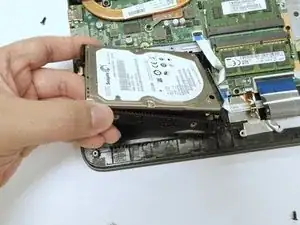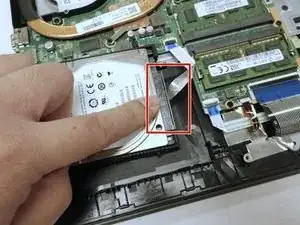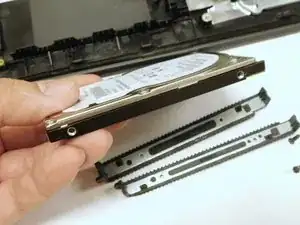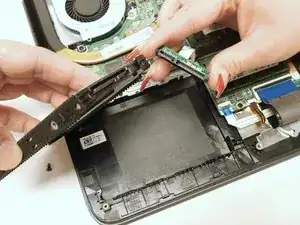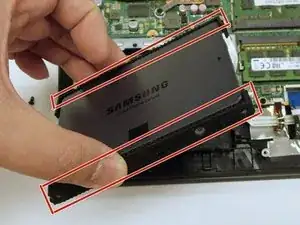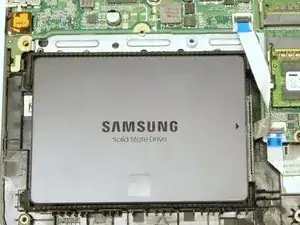Introduction
Faulty Hard Drive
- If your device is demonstrating issues such as frequent error failures, corrupted data, files, and folders, and blue screen of death this may indicate there is a faulty hard drive. You will need to replace it. Use the guide below to help you replace your hard drive.
- Before you begin using this guide, make sure you have inspected your device thoroughly for similar symptoms mentioned above before making hardware changes.
- Make sure the device is not powered on before proceeding with the the guide steps and disconnected from any external power source.
- Second, proceed safely but rapidly to prevent any potential data loss using a new hard drive that better works for your system.
Tools
Parts
-
-
In the red is the battery and the battery's holding/locking latches.
-
Slide the latches in the direction the arrows face. This will unlock and release the battery.
-
-
-
Check the battery port on your device and make sure it is clear of debris and pins are not bent or damaged.
-
Install the new battery into the port and press down gently.
-
Once installed and you have followed the battery manufacturer's instructions, turn your device on to its upright position and boot your device.
-
-
-
Remove battery by pushing the slide tabs towards the left.
-
Use a Phillips #1 screwdriver to remove the two 12.5 mm screws, four 5.5 mm screws, and six 7.25 mm screws.
-
Remove two corner panels along the ends of the battery slot and this will expose another set of screws (1 under each panel).
-
Remove the remaining six Phillips #1 7.25 mm screws hidden in the battery area and underneath the covers.
-
-
-
Remove the optical drive by pulling on the plastic cover panel.
-
Using a prying tool, gently pry the back panel off.
-
-
-
Gently lift the left end of the drive and remove it from the device.
-
Remove the two rubber pieces by gently pulling them away from the drive
-
On the HDD, remove the connecting cable by gently prying the plastic tab off.
-
-
-
Observe the port connection and match it with the drives slot.
-
Connect and press firmly.
-
Install black rubber pieces on to the drive.
-
Place the drive into its slot.
-
To reassemble your device, follow these instructions in reverse order.
